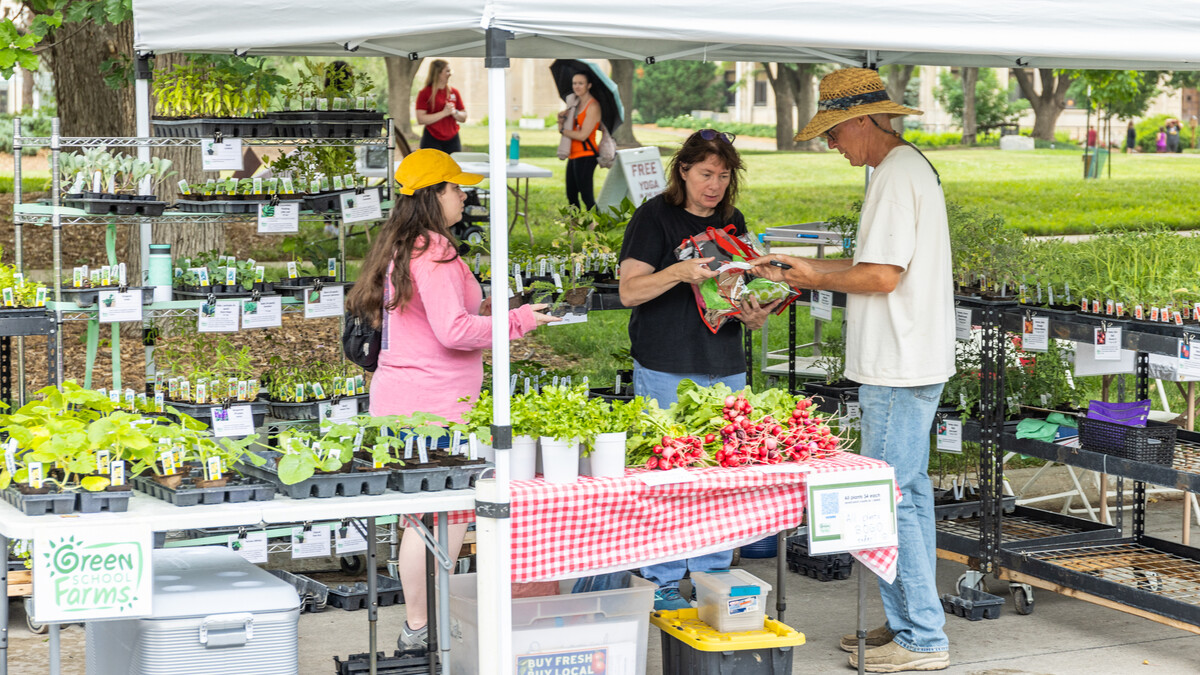March 23, 2016
Lincoln, Neb. — Good neighbors in rural Nebraska keep open the lines of communication and work together – important for growers of both traditional row crops and alternative crops.
All producers must follow all pesticide label directions. The label is the law; failure to follow label directions could result in liability. That also applies to applicators who control weeds along public roadways and railroad lines.Alternative and organic crops, such as orchards, vegetable and fruit production, bees and fish, contribute to Nebraska’s diversity and economy. Take grapes, for example.
Traditional agriculture contributed $25 billion to the state’s economy in 2014, according to the Nebraska Department of Agriculture; the state’s grape and wine industry reports its economic benefit at nearly $151 million.
“Grapes can be quite profitable,” said Steve Gamet, University of Nebraska-Lincoln viticulture technologist. Grapes typically produce four tons per acre; if they are valued at even 50 cents per pound, one acre could produce $4,000 worth of grapes, Gamet said. In comparison, corn at $3 per bushel and 300 bushel per acre would net less than a fourth of that, or about $900.
Like many alternative crops, grapevines are sensitive to pesticides, especially some herbicides. With this spring’s warm March temperatures, early bud-breaking grape cultivars could be opening around April 1, Gamet said, about two weeks earlier than usual. That means “bud break” could coincide with herbicide applications in fields where traditional row crops are grown.
Grapes, a broadleaf crop, are very susceptible to herbicides containing 2,4-D or dicamba used to control broadleaf weeds, said Clyde Ogg, UNL pesticide safety educator. Drift damage is one of the biggest alternative crop dangers.
“We can’t ignore there will be drift,” Ogg said, adding there are ways to help reduce drift and enhance neighbor relationships. These include:
- Communicate with neighbors. Traditional producers can inform their alternative crop neighbors of when they intend to treat for weeds or insects. Equally important is for alternative crop growers to inform their traditional producer neighbors of their plans.
- All producers must follow all pesticide label directions. The label is the law; failure to follow label directions could result in liability. That also applies to applicators who control weeds along public roadways and railroad lines.
- Commercial alternative crop producers can:
- Register with DriftWatch (www.driftwatch.org), a voluntary service recording more than 870 sensitive Nebraska crop site or field registrations for grower information and locations. For more information, see this DriftWatch fact sheet at http://bit.ly/NDADWinfo.
- Post DriftWatch or UNL signage alerting others that a pesticide-sensitive crop is nearby. The “No Drift Zone” signs identify specialty crops to passersby and promote the DriftWatch map, both of which increase awareness and communication.
- Traditional growers and pesticide applicators can:
- Review the DriftWatch map frequently to find areas with crops that are susceptible to pesticides and drift. Register with DriftWatch to receive notices when crops have been added to your spray area.
- Visit http://pested.unl.edu/herbicide-stewardship for tips on how to avoid drift around sensitive crops.
- Access UNL Extension resources, including publications and videos, to learn about reducing spray drift. These include:
- G2179, “Protecting Pesticide Sensitive Crops,” http://extensionpublications.unl.edu/assets/pdf/g2179.pdf
- G1773, “Spray Drift of Pesticides,” http://extensionpubs.unl.edu/publication/9000016365044/spray-drift-of-pesticides/
- EC130, “Guide for Weed, Disease, and Insect Management in Nebraska,” https://marketplace.unl.edu/extension/ec130.html.
- “Sensitive Sites: Grapes and Vineyards,” https://www.youtube.com/watch?v=EZeYln2skWU. Many other UNL Extension Pesticide Safety Education Program videos are available at https://www.youtube.com/user/UNLExtensionPSEP/videos.
Ogg noted that the number of locally grown food and smaller farms could well increase in Nebraska. NDA reports that Nebraska produce growers have increased from 78 in 2000 to more than 600 in recent years – an increase of 700 percent – and contributes an estimated $66 million annually in sales to the state’s economy. As with traditional agriculture, alternative production has a place, as well as a responsibility.
“Be known and be a part of the community,” said Ogg to alternative growers. “When you select your site for your enterprise, look around. Know your neighbors.”
Clyde Ogg
UNL Pesticide Safety Educator
402-472-1632
Steve Gamet
UNL Viticulture Technologist
402-472-9763
Cheryl Alberts
UNL Project Coordinator
402-472-1696







